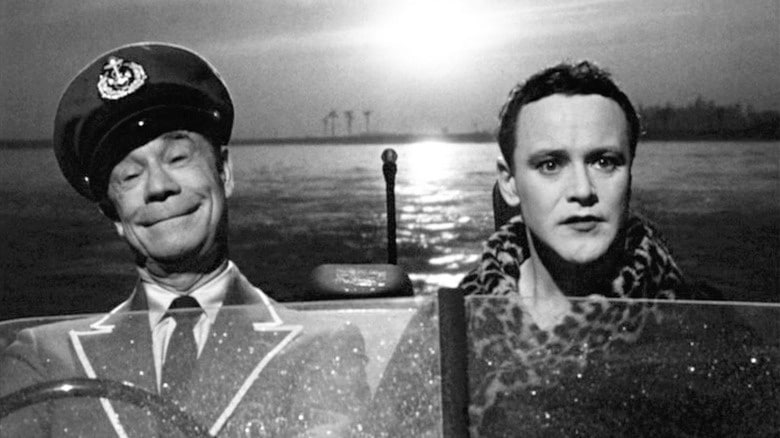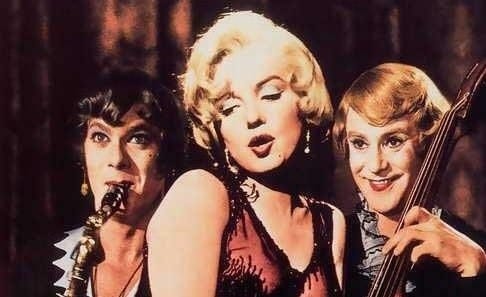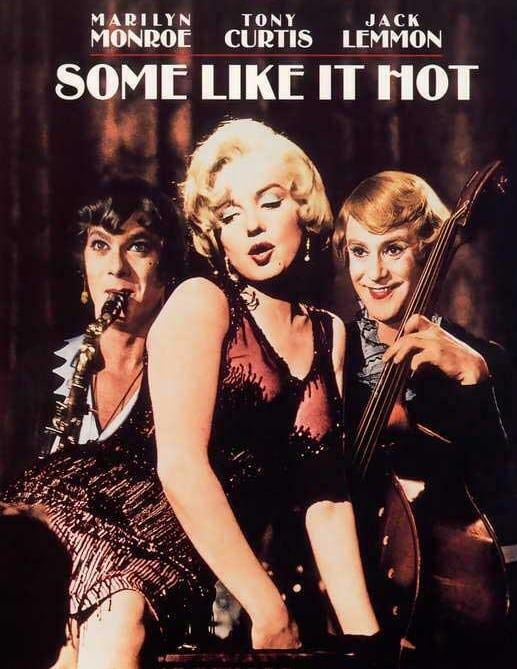
Why Save the Cat! Analyzes Classic Films
Blake Snyder did not invent story beats. Blake studied screenplays—including ones written before he was born—and discovered how brilliant writers inherently hit the same beats film after film. And so Blake codified these similar story beats, gave those beats easily remembered names, and offered his analysis of structure to help writers (who might not be as inherently brilliant as Billy Wilder and I.A.L. Diamond) create the foundations for their tales.
See how Oscar®-Winning Some Like It Hot hits the Save the Cat! story beats!
Written by: Billy Wilder and I. A. L. Diamond
Story by: Robert Thoeren & Michael Logan, based on the 1935 French film, Fanfare of Love
Genre: Dude with a Problem (an innocent hero, a sudden event that thrusts the hero into a life or death battle)
Trivia: Some Like It Hot did not receive approval from the Motion Picture Production Code (Hays Code) because of its LGBTQ-related themes; the 1959 film’s overwhelming success effectively stripped the agency of its hold on Hollywood, although the Hays Code would limp along until 1968.
Opening Image: Four grim-faced men silently ride in a hearse, sitting around a coffin. Suddenly, a police car shrieks behind them and the supposed pallbearers proceed to bear arms. A shootout ensues, the coffin springs leaks that gush illegal alcohol, and a super appears onscreen: Chicago, 1929. We are in the era of Prohibition and the wildly unpopular 18th Amendment has given rise to rampant organized crime, providing the external bad guys for our heroes’ journeys.
Set-Up: As Police Detective Mulligan prepares to raid “Mozzarella’s Funeral Home” (the front for crime boss Spats Colombo’s speakeasy), best friend musicians Joe (Tony Curtis) and Jerry (Jack Lemmon) happily play their sax and bass, so grateful for the paycheck they will receive after this show. They’ve been out of work for four months, so there are many things that need fixing—Joe and Jerry can’t pay their rent, they owe money all over town, Jerry has a painful cavity that he can’t afford to fix, and they’re both becoming notorious for mooching dough from the female dancers. But the main thing that needs fixing is Joe and Jerry’s inner bad guys: immaturity, impulsivity, infidelity, misogyny… we could go on, but this is a comedy, after all.
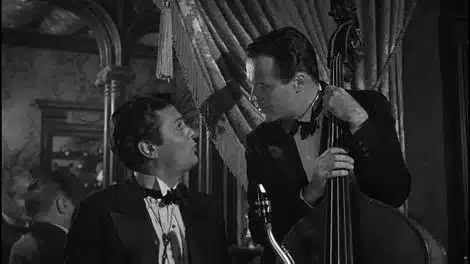
Theme Stated: After leering at the line of dancing girls and considering which he will bed next, Joe says “We’ve borrowed money from every girl in the line.” In Joe and Jerry’s thesis world, women are disposable, only good for sex and cash; these men are going to need a thorough education in what life is like on the other side of the X chromosome.
Catalyst: Police Detective Mulligan raids the speakeasy, based on a tip from stoolie “Toothpick Charlie.” Not only do Joe and Jerry lose their jobs and that awaited paycheck, they barely escape going to jail.
Debate: Our boys have moved from broke to destitute, but they disagree on how to solve the issue; Joe bets their overcoats on dog races (they lose) and Jerry insists they try their booking agent’s office to beg for jobs (no work). When Joe’s jilted girlfriend Nellie plays with their emotions by saying there’s a three-week gig in Florida for a sax and bass player, Joe and Jerry are thrilled, only to find out that it’s for an all-girl band. Jerry suggests that they don some wigs and padding and go for it, but Joe rejects this crazy idea out of hand. Instead he manipulates Nellie into lending them her car to go to a low-paying one-night gig out of town.
Break into Two: In the garage, Joe and Jerry witness Spats Colombo gun down Toothpick Charlie in St. Valentine’s Day Massacre-esque fashion, and Spats unfortunately witnesses them right back; the mob turns their machine guns on the accidental observers, leaving a row of bullet holes in Jerry’s bass. Their lives on the line and needing some sort of disguise, Joe changes his mind about pretending to be a woman, and we cut to the classic scene of Tony Curtis and Jack Lemmon in full drag, struggling to walk on their high heels right into Sweet Sue’s Society Syncopators.
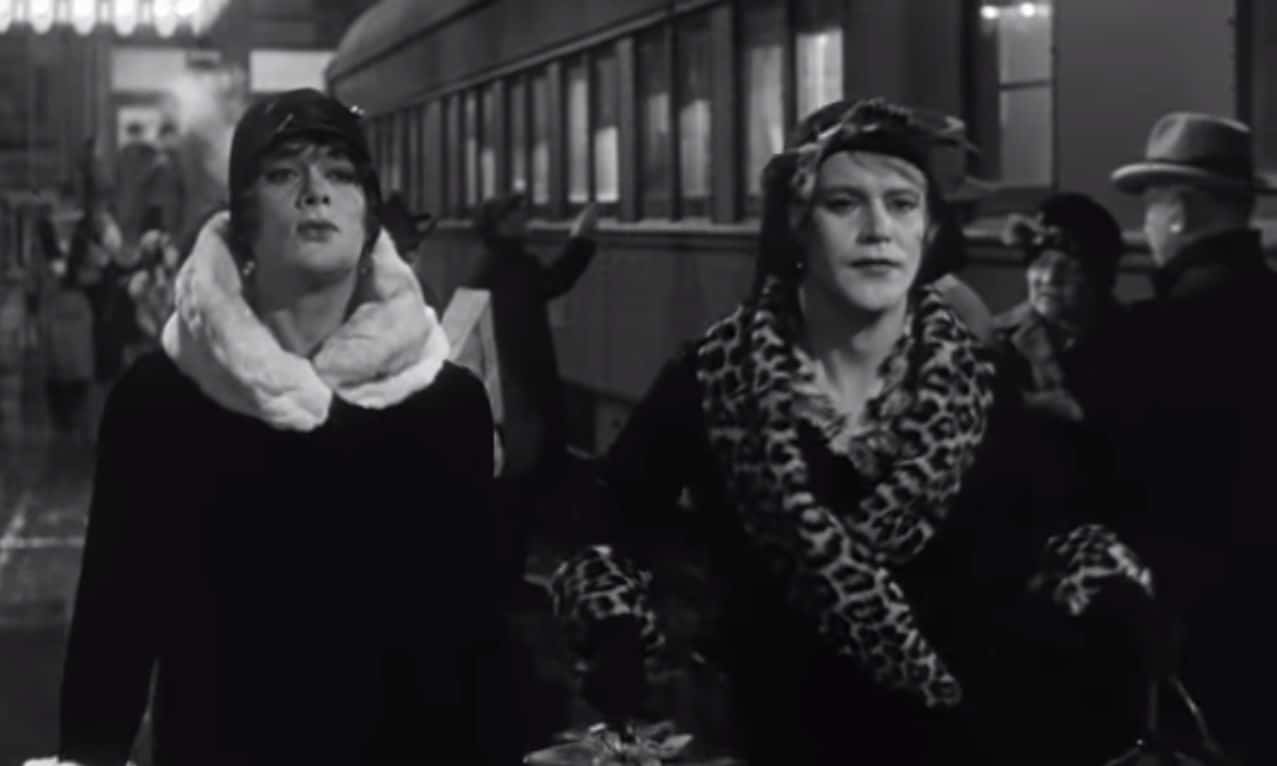
B Story: Joe’s relationship with Sugar Kane (Marilyn Monroe), channeling both his “Josephine” and fake millionaire “Junior” alter egos, will be the change agent in his life, maturing him and quieting down his inner misogynist to an acceptable level, at least by 1959 standards. To a lesser extent, Jerry’s adventures with legit millionaire Osgood Fielding do the same, making him less anxious and more open-minded, and providing the winking subtext of gay relationships that made the film so controversial. (It was banned in the entire state of Kansas!)
Fun and Games: The antithesis world in which the newly-minted Josephine and Daphne find themselves puts the “fun” in Fun and Games; every possible cross-dressing joke is pulled out and performed with verve. Jerry bemoans the difficulty of “feeling naked” in a skirt in cold weather, they are awed by the classic entrance of Sugar (“She moves like Jell-o on springs!”), and Joe keeps popping Jerry’s bosoms. The overnight train ride to Florida with a bevy of sexy and boozy babes is a master class in physical comedy with enough underlying zingers about unfaithful sax players and men who borrow money from their girlfriends to start making our boy/ladies feel a mite sheepish. They slowly start to realize that women are human beings; what a concept!
This doesn’t stop Joe, however, from formulating a plan to get Sugar in the sack; Tony Curtis does a spot-on Cary Grant imitation as “Shell Oil Junior,” a millionaire who’s poor in the ways of love. Feigning impotence, he lures Sugar to a yacht where she tries to “cure” him with copious kissing and other methods (off-screen); meanwhile, the actual yacht owner, Osgood, is dancing the night away with Daphne and we are treated to the sight of Jack Lemmon doing a mean tango with a rose in his teeth.

Midpoint: It’s a false victory as Joe has scored with Sugar and Jerry comes home with a diamond bracelet and a marriage proposal. Ridiculous and hilarious, yes, but there is a hint of some emotional growth, raising the stakes; Joe and Jerry are starting to grow weary of their games and critical of one another’s lies perpetrated against the innocent victims, Sugar and Osgood.
Bad Guys Close In: Spats Colombo and his cronies show up for the “Friends of Italian Opera” convention at the exact same hotel where Sweet Sue’s Syncopators are playing. The time clock starts ticking: how long will it take before the exterminators and fugitives cross paths?
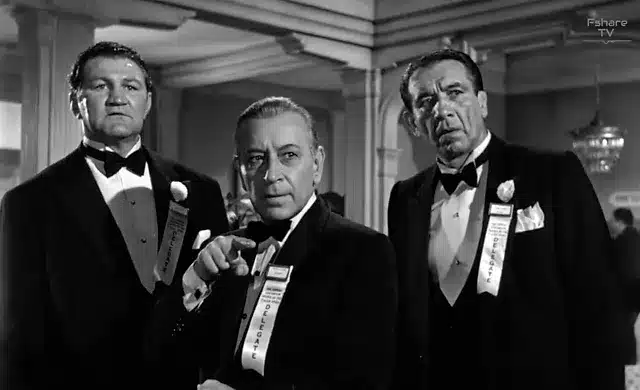
All Is Lost: Not long at all. In the hotel elevator, Spats and the fake ladies come face to face. The mobsters stare at them with a nagging sense of recognition and when they ask, “Have you broads ever been in Chicago?”, Daphne nervously babbles the whiff of death out loud: “Chicago? We wouldn’t be caught dead in Chicago!”
Dark Night of the Soul: Their antithesis world crashing down around them, Joe and Jerry pack their suitcases in abject terror, pausing only to grieve the imminent loss of their sort-of significant others. Jerry knows he will never find another man who will treat him as well as Osgood and in an uncharacteristic show of sacrificial love, Joe gifts Sugar the diamond bracelet that they were going to sell to fund their escape. The boys have grown up (well, marginally) by living as women; now they just need to not die.
Break into Three: Spats sees the bullet holes in Jerry’s bass and realizes who those “broads” actually are. The showdown is on!
Finale: Amidst the long chase scene with its disguises, slamming doors, climbing of verandas, hiding under corpses, and machine gun-wielding gangsters popping out of giant birthday cakes, Joe gets a chance to have a moment of synthesis. He hears Sugar sadly singing “I’m Through with Love” and although he’s in full Josephine regalia, he marches onto the stage and kisses her passionately, saying “Don’t cry; he’s not worth it.” Jerry gets his own moment, although of a slightly saltier variety. As they escape on a boat with Osgood Fielding, Daphne lists all the reasons she can’t marry him, from her checkered past to the fact that she can’t have children. Osgood remains unfazed: “We’ll adopt.”
Final Image: Jerry finally pulls off his wig in frustration, stating the main problem: “I’m a man.” Osgood shrugs and utters one of the classic lines in American film, “… Nobody’s perfect.” And as Josephine/Joe, Sugar, Jerry/Daphne, and Osgood sail off into the sunset, they mirror and subvert the opening chase scene—these escapees will succeed, thumbing their noses at crime, punishment, and the rigid sexual conventions of 1950’s Hollywood.
